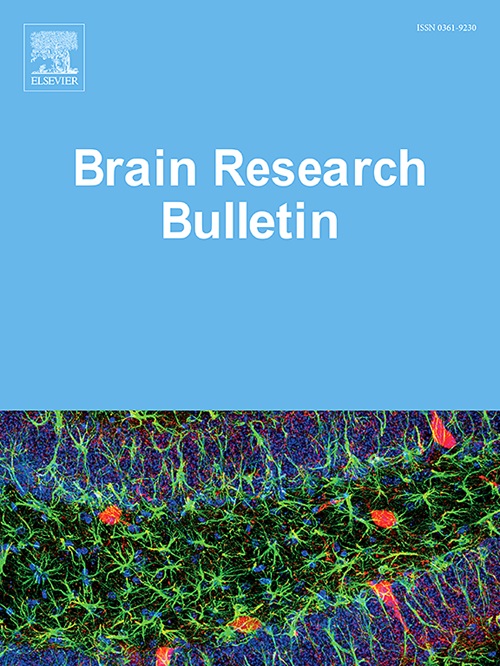IF 3.5
3区 医学
Q2 NEUROSCIENCES
引用次数: 0
摘要
帕金森病(PD)是第二大常见的神经退行性疾病。长非编码 RNA(lncRNA)与神经退行性疾病的发生和发展密切相关,但其潜在机制仍难以捉摸。本研究旨在阐明LINC02282(一种在GEO数据库中显著下调的lncRNA)对帕金森病产生神经保护作用的机制。LINC02282在暴露于MPP+的SH-SY5Y和SK-N-AS细胞以及注射了MPTP的小鼠中表达很低。LINC02282质粒的过表达抑制了SH-SY5Y和SK-N-AS细胞的凋亡并促进了其增殖。此外,利用腺相关病毒过表达 LINC02282 可减少帕金森病小鼠神经元的损伤。LINC02282主要定位于细胞核,它能促进含三方基序蛋白6(TRIM6)启动子的甲基化,从而抑制TRIM6的表达。LINC02282与DNA甲基转移酶(DNMTs)结合,LINC02282过表达会增加DNMTs与TRIM6启动子的结合。单独过表达 TRIM6 会诱导小鼠出现类似帕金森病的症状,而 TRIM6 的联合上调会抑制 LINC02282 在体外和体内的神经保护作用。总之,LINC02282通过招募DNMTs到TRIM6启动子区域并抑制TRIM6的表达,减轻了帕金森病的神经元损伤。本文章由计算机程序翻译,如有差异,请以英文原文为准。
LINC02282 promotes DNA methylation of TRIM6 by recruiting DNMTs to inhibit the progression of Parkinson's disease
Parkinson’s disease (PD) is the second most common neurodegenerative disease. Long non-coding RNAs (lncRNAs) are closely linked to the occurrence and development of neurodegenerative diseases, while the underlying mechanisms remain elusive. The goal of the present study was to elucidate the mechanism by which LINC02282, a significantly downregulated lncRNA in the GEO database, elicits neuroprotective effects on PD. LINC02282 was poorly expressed in SH-SY5Y and SK-N-AS cells exposed to MPP+ and mice injected with MPTP. LINC02282 overexpression plasmids inhibited apoptosis and promoted the proliferation of SH-SY5Y and SK-N-AS cells. In addition, LINC02282 overexpression using an adeno-associated virus reduced neuronal damage in PD mice. LINC02282 was mainly localized in the nucleus, and LINC02282 promoted the methylation of the tripartite motif-containing protein 6 (TRIM6) promoter to inhibit TRIM6 expression. LINC02282 bound to DNA methyltransferases (DNMTs) and LINC02282 overexpression increased the binding of DNMTs to the TRIM6 promoter. Overexpression of TRIM6 alone induced PD-like symptoms in mice and combined TRIM6 upregulation inhibited the neuroprotective effect of LINC02282 both in vitro and in vivo. In summary, LINC02282 alleviated neuronal injury in PD by recruiting DNMTs to the promoter region of TRIM6 and inhibiting TRIM6 expression.
求助全文
通过发布文献求助,成功后即可免费获取论文全文。
去求助
来源期刊

Brain Research Bulletin
医学-神经科学
CiteScore
6.90
自引率
2.60%
发文量
253
审稿时长
67 days
期刊介绍:
The Brain Research Bulletin (BRB) aims to publish novel work that advances our knowledge of molecular and cellular mechanisms that underlie neural network properties associated with behavior, cognition and other brain functions during neurodevelopment and in the adult. Although clinical research is out of the Journal''s scope, the BRB also aims to publish translation research that provides insight into biological mechanisms and processes associated with neurodegeneration mechanisms, neurological diseases and neuropsychiatric disorders. The Journal is especially interested in research using novel methodologies, such as optogenetics, multielectrode array recordings and life imaging in wild-type and genetically-modified animal models, with the goal to advance our understanding of how neurons, glia and networks function in vivo.
 求助内容:
求助内容: 应助结果提醒方式:
应助结果提醒方式:


